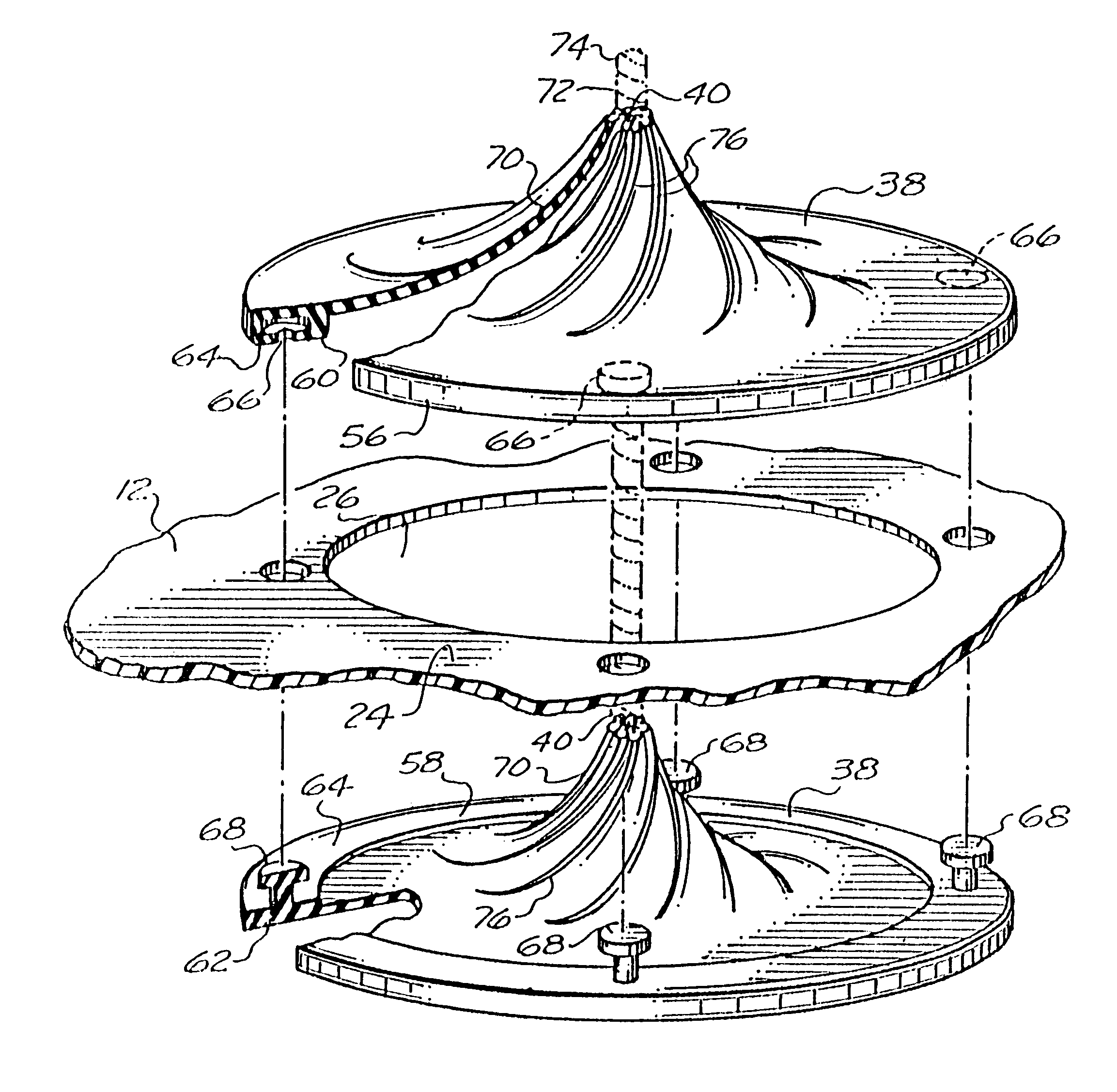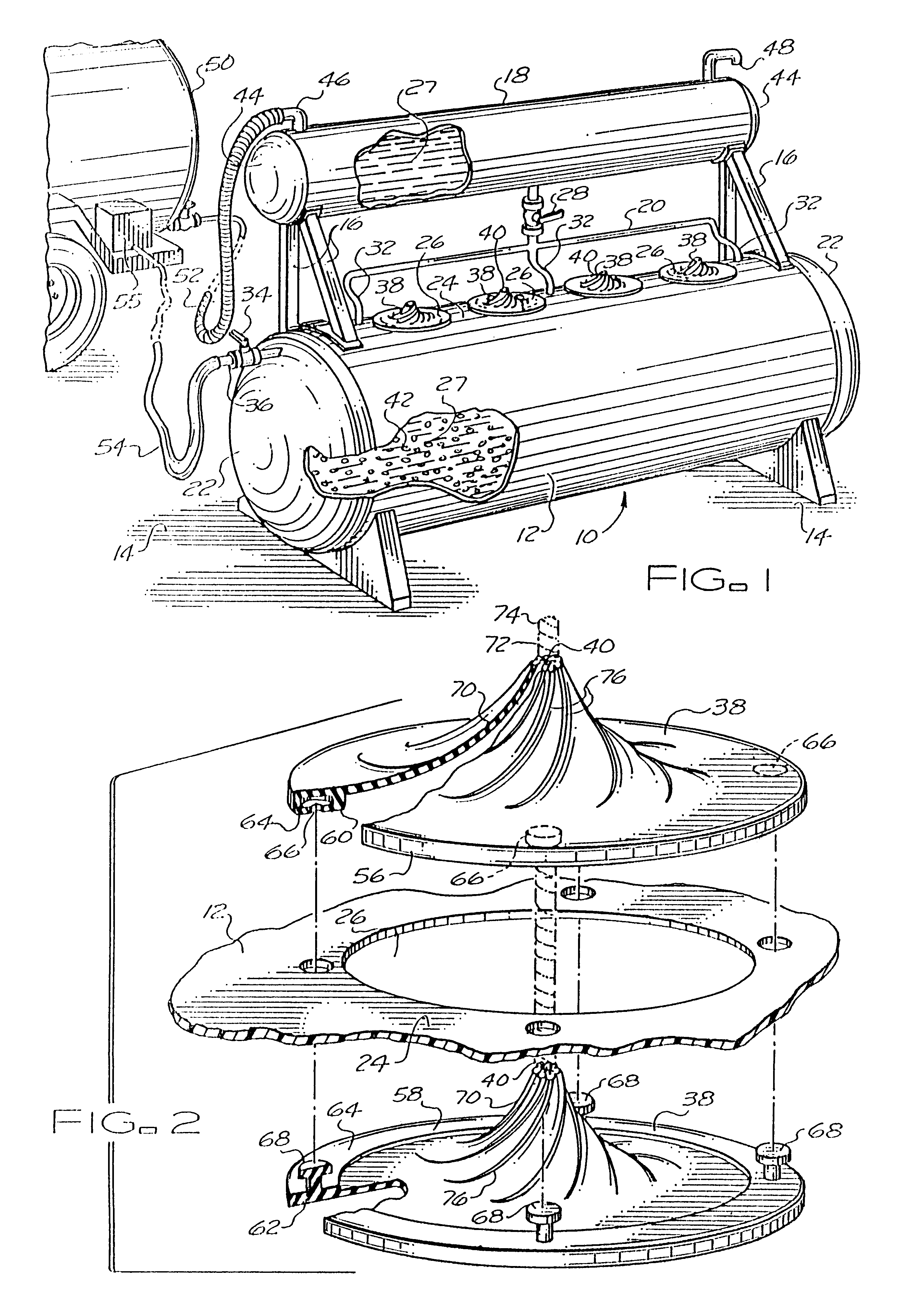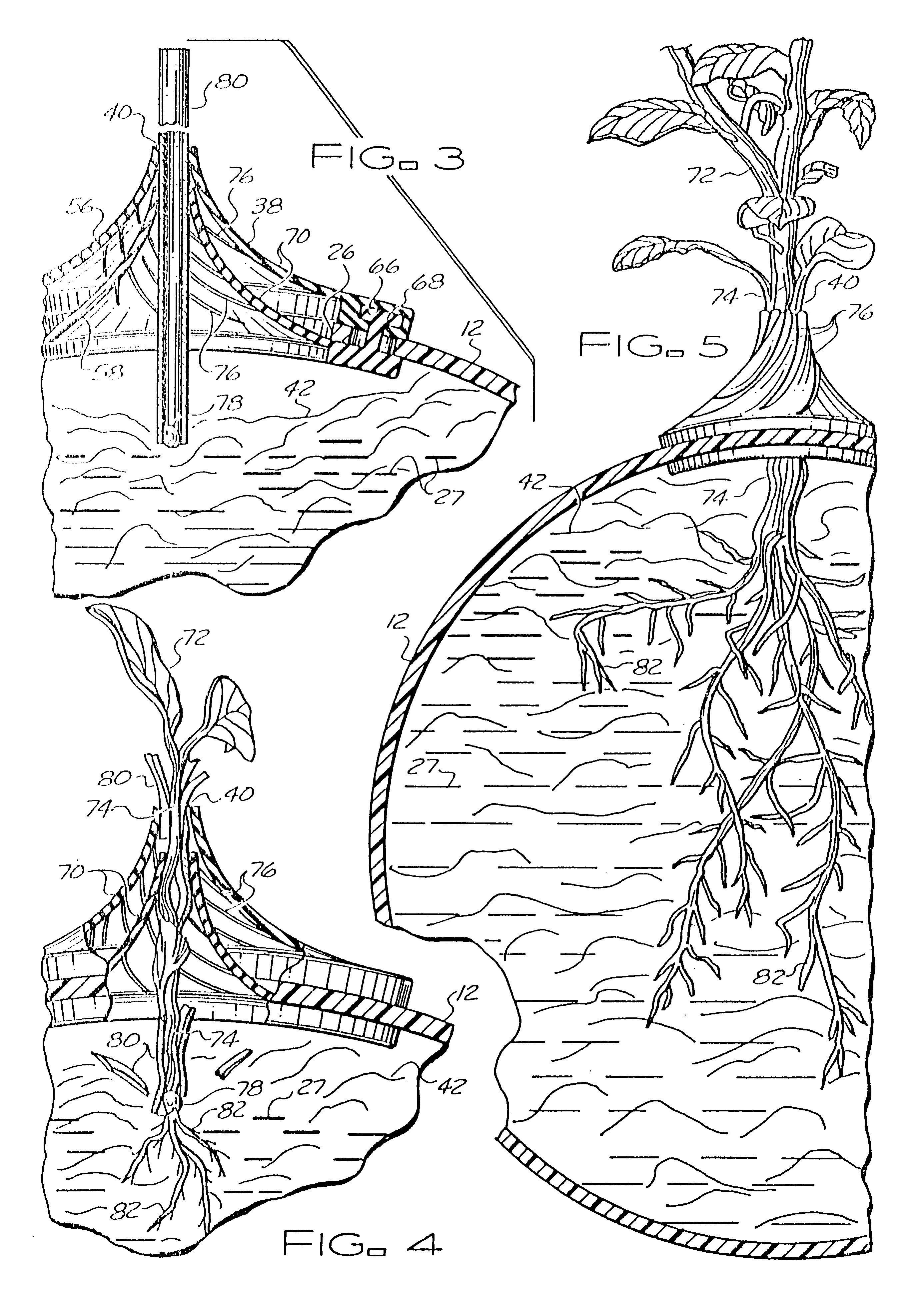Hydroponic cultivation apparatus and method
a technology of hydroponic cultivation and equipment, applied in botany apparatus and processes, agriculture, gas emission reduction, etc., can solve the problems of substantial investment in facilities and equipment, the inability to successfully cultivate certain plants, and the drawbacks of hydroponic techniques
- Summary
- Abstract
- Description
- Claims
- Application Information
AI Technical Summary
Benefits of technology
Problems solved by technology
Method used
Image
Examples
Embodiment Construction
FIG. 1 shows a perspective view of a plant grower 10 constructed in accordance with the teaching of the present invention. Grower 10 includes a growing container 12, which may, but is not required to, reside directly on top of ground 14 in an outdoor environment. Supports 16 position a holding container 18 slightly above growing container 12. A manifold arrangement 20 couples holding container 18 to growing container 12.
Growing container 12 is constructed from a cylindrically shaped pipe, preferably formed from polyvinyl chloride (PVC) or another plastic. Container 12 includes end caps 22 to seal opposing ends of the pipe which forms container 12. An upper region 24 of container 12 includes a plurality of openings 26, which are axially spaced apart from one another in a line on container 12. The precise number of openings 26 is not an important parameter in the present invention. However, openings 26 are spaced apart from one another by at least a distance which corresponds to the m...
PUM
 Login to View More
Login to View More Abstract
Description
Claims
Application Information
 Login to View More
Login to View More - R&D
- Intellectual Property
- Life Sciences
- Materials
- Tech Scout
- Unparalleled Data Quality
- Higher Quality Content
- 60% Fewer Hallucinations
Browse by: Latest US Patents, China's latest patents, Technical Efficacy Thesaurus, Application Domain, Technology Topic, Popular Technical Reports.
© 2025 PatSnap. All rights reserved.Legal|Privacy policy|Modern Slavery Act Transparency Statement|Sitemap|About US| Contact US: help@patsnap.com



